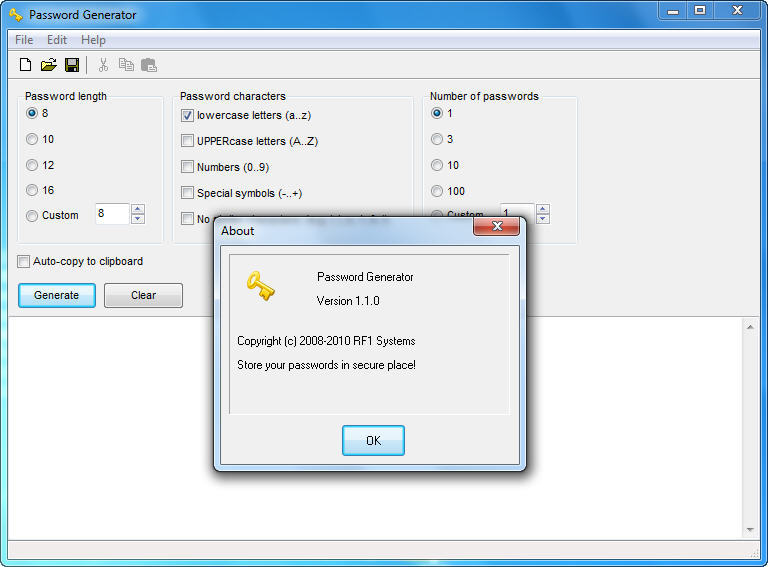

Sharing your passwords insecurely through email, text message, Microsoft Teams, WhatsApp, Slack, Discord, etc., leaves you at a higher risk of having your accounts compromised. This attack works on the assumption that people often use the same username and password across multiple sites.ĭon't share passwords in unencrypted formats A credential stuffing attack is when a cybercriminal takes leaked credentials from one site and uses them on multiple sites in an attempt to gain access to your accounts. Reusing the same passwords puts you at risk of a cyberattack, such as credential stuffing. At least one special character, such as ! # ?.At least 12 characters, and preferably more.
WINDOWS RANDOM PASSWORD GENERATOR GENERATOR
Below is a bespoke solution thatll generate a random printable ASCII string using the systems cryptographic generator and a little bit of maths sample usage: SecureRandom::GeneratePassword(64). Strong passwords should be long, complex and difficult to remember. MartinBrandls answer works but requires importing System.Web. Your first line of defense against cybercriminals breaking into your online accounts and stealing your personal data is to use strong, one-of-a-kind passwords. Password Best Practices to Follow Don't use personal information in your passwordsĮasy passwords, such as password123 or your dog’s name, are simple to remember but also simple for cybercriminals to crack.

Strengthen your organization with zero-trust security and policiesĪchieve industry compliance and audit reporting including SOX and FedRAMPĪutomate credential rotation to drastically reduce the risk of credential-based attacks Restrict secure access to authorized users with RBAC and policies Initiate secure remote access with RDP, SSH and other common protocols Manage and protect SSH keys and digital certificates across your tech stack


 0 kommentar(er)
0 kommentar(er)
